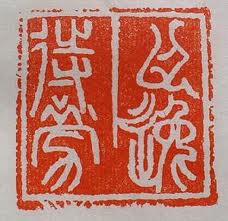以逸待勞
Await the Exhausted Enemy at Your Ease
原文 Content
困敵之勢,不以戰(zhàn);損剛益柔。

英文注釋:It is an advantage to choose the time and place for battle. In this way you know when and where the battle will take place, while your enemy does not. Encourage your enemy to expend his energy in futile quests while you conserve your strength. When he is exhausted and confused, you attack with energy and purpose.
探源 Origin
英文:This phrase is derived from The Art of War authored by Sun Tzu, "to be near the goal while the enemy is still far from it, to wait at ease while the enemy is exhausted, to be well-fed while the enemy is famished---this is the art of husbanding one's strength." In 684 BC, the Qi army attacked the state of Lu. Lu Zhuang Gong then decided to embark on an expedition with his warriors. Cao Gui, a warrior went with him. The Qi-Lu parties set the battlefield in Chang Shao. Qi took the lead to beat drum. Soldiers rushed over like a flood. But Cao Gui persuaded Lu Zhuang Gong just to keep up with a good defense. Qi began to launch the second round of attacks. They beat the drums again. But Lu stayed on the defensive and didn't attempt to strike. Because of this, Qi thought Lu was timid and then relaxed. When Lu heard Qi beating the drums for the third time, Cao Gui commanded their troops to attack. The Qi army was exhausted after two attacks. Meanwhile, the Lu soldiers had been in resting for a long time and were finally ready to attack. As a result, the Lu soldiers beat the Qi army and won the battle.
中文:這一詞來自《孫子兵法》中“以近待遠,以佚待勞,以飽待饑,此治力者也。”(“佚”通“逸”)公元前684年,齊國派兵攻打魯國。魯莊公親征上陣,與武士曹劌一起率兵出征。齊魯雙方把戰(zhàn)場設(shè)在了長勺。齊國率先擂起了沖天的戰(zhàn)鼓,士兵像洪水般沖過來。但曹劌說服魯莊公只需嚴守防線。齊國開始發(fā)動第二輪進攻,他們重新擂起戰(zhàn)鼓。可魯國仍然紋絲不動,只防守,不采取任何進攻。于是齊國軍隊認為魯國膽小不敢進攻,便懈怠下來。當聽到齊國擂起第三次戰(zhàn)鼓的時候,曹劌讓魯莊公下令開始進攻。由于齊國經(jīng)過兩次進攻已疲憊不堪,而魯國士兵原地待命已久,早已蓄勢待發(fā),結(jié)果齊國士兵被英勇的魯國士兵打得落荒而逃。(引用自《您好漫畫-三十六計》)
詞匯 Vocabularies
futile: 徒勞的,無益的
conserve: 保存,節(jié)省;preserve也有保存的意思,但preserve重在保護、維持“原來的狀態(tài)”,而converse則重在強調(diào)“保護、使不受破壞、使不遭受損失”;如:文中的conserve one's strength(保持體力),preserve peace(維持和平)
famished: 非常饑餓的
embark: 從事,著手
expedition: 這里是“遠征”的意思,此外還可以指“考察”,如:scientific expedition(科學(xué)考察)
launch: 發(fā)動,發(fā)出;此外還有推出(新產(chǎn)品)的意思
strike: 既可作動詞,也可作名詞;此處作動詞,意思是“攻擊,攻打”,另外還可以表示“罷工”
timid: 膽小的,膽怯的
總結(jié) Summary
以逸待勞的“待”字并不是指消極被動的等待,而是指待機而動,以不變應(yīng)萬變,以靜制動,積極創(chuàng)造戰(zhàn)機,轉(zhuǎn)劣勢為優(yōu)勢。其精髓在于用我方的養(yǎng)精蓄銳去對付對方的疲于奔命,如此一來即便我方實力稍弱,也可有取勝的把握。
相關(guān)閱讀
(來源:滬江英語 編輯:崔旭燕)
